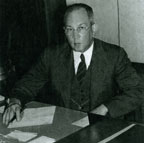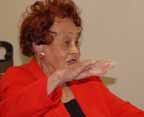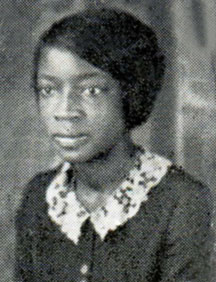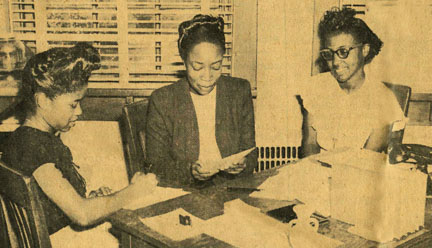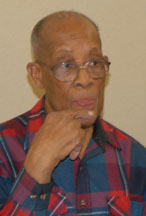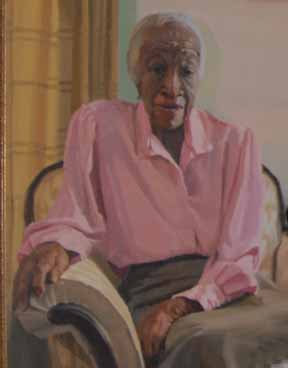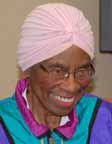

Terrell High School Leaders: |
|||||||||||||||||||||||||||||||
|
|||||||||||||||||||||||||||||||
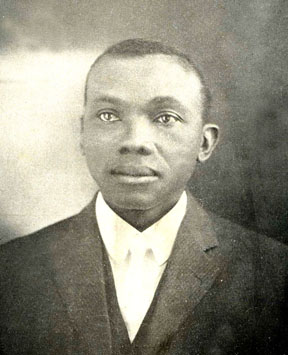 L. M. Johnson principal from 1921-1945 |
|||||||||||||||||||||||||||||||
|
|||||||||||||||||||||||||||||||
The Secondary School Study was establishing new roles for educational administrators and leaders. Democratic ideals served to define the experimental efforts of schools. The principal provided direction and instilled confidence while also fostering flexibility and extending authority among the staff. Articulating and achieving such a balance of strong leadership with diffused authority proved difficult, and the careers of each “life-long principal” of the Secondary School Study warrant further study. Principal L. M. Johnson, who served as principal of Terrell High School from 1921-1945, was a graduate of Fisk University with additional study at the University of Chicago and University of Kansas. Johnson represented this new role for educational administrators and brought out feelings of kindness and respect among teachers and students. |
|||||||||||||||||||||||||||||||
“I admired Principal Johnson. He was a quiet man who did not use words unnecessarily, but he was a wonderful leader and so respected by the teachers.” James Mallard |
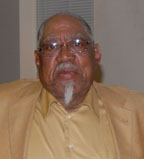 James Mallard |
||||||||||||||||||||||||||||||
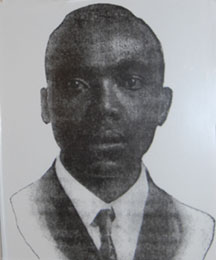 Principal Johnson |
|||||||||||||||||||||||||||||||
|
“Mr. Johnson was an outstanding principal and a kind person. And the I. M. Terrell teachers were very wonderful; they all seemed to strive to make us the best that they could. They inspired me, and I loved them all.” Lillian Hemphill |
||||||||||||||||||||||||||||||
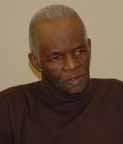 Joseph Webb |
“Principal Johnson was very resourceful. While serving as principal, he also taught my geometry class and allowed students to become actively involved in their learning and to take responsibility for their education.” Joseph Webb |
||||||||||||||||||||||||||||||
“Principal Johnson was a nice, kind-hearted, quiet man who commanded respect. He was an outstanding educational leader.” Robert L. O’Neal |
|||||||||||||||||||||||||||||||
|
|||||||||||||||||||||||||||||||
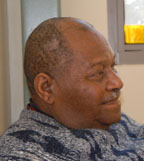 Robert L. O’Neal |
|||||||||||||||||||||||||||||||
“All of the teachers were guided by Mrs. Peace because she commanded such great respect. She was hard core . . . and meant business. Mrs. Peace didn’t spare the rod.” |
|||||||||||||||||||||||||||||||
“Sometime Mrs. Peace did not have to say a word. She was always immaculately dressed, and she would stand there . . . looking at you. That was enough.” |
|||||||||||||||||||||||||||||||
Along with the important role of a career principal, one specific teacher, Hazel Harvey Peace, filled a very important function for Terrell High School—that of a “tribal elder”/“teacher elder.” As mentioned by one student, Mrs. Peace “ran” the school. More research needs to be completed about this type of teacher, a common figure at outstanding progressive schools, who provided strength and guidance for the culture of a school. A teacher who builds a life in the classroom can indeed become the school leader by setting an example and by permitting others—staff and students—to define themselves and their place in the social order. With an emphasis on the cooperative expression of ideals and the role of collective intelligence in the process of social change, such leadership is defined not by title or organizational power but by insight and thoughtfulness. |
|||||||||||||||||||||||||||||||
|
|||||||||||||||||||||||||||||||
“Mrs. Peace was small and petite and very strict, but we all admired and respected her. Her favorite words were “young people.” When she said that, we all became quiet! We were ready to listen.” James Mallard |
|||||||||||||||||||||||||||||||
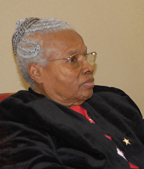 Opal Lee |
|||||||||||||||||||||||||||||||
“Mrs. Peace ran that school. Professor Johnson was the scholar and principal, and Mrs. Peace was the disciplinarian, quite petite but with an iron will. She never raised her voice. All she had to do was to say ‘young ladies’ or ‘young men,’ and we all stopped. But we were never frightened of her. She always had our best interests in mind.” Opal Lee |
|||||||||||||||||||||||||||||||
|
“Mrs. Peace developed the annual Boys and Girls Debate, a major academic and social event. In preparation for this competition, she insisted that we learn both sides of the issues. She developed our inductive and deductive reasoning, and the debates proved a wonderful social event that also developed our academic and intellectual abilities.” Reby Carey |
||||||||||||||||||||||||||||||
One beloved Eight Year Study teacher, Margaret Willis, who also served as a curricular consultant for the Secondary School Study, filled this role at her high school during a 47 year career. Her role was legendary as she guided the school without ever serving as an administrator. Years later at a school reunion when the alumni group was asked why Willis never became the principal, one former student laughed and said, “because she didn’t want to take a demotion.” Perhaps the same could be said of Mrs. Peace. Her leadership was readily apparent, and no title would further enhance her significant role as educational leader. |
|||||||||||||||||||||||||||||||
|
|
||||||||||||||||||||||||||||||
“The city hall building has been named in her honor: The Hazel Harvey Peace Center for Neighborhoods. The building is a testimony to the significance of the school, Mrs. Peace, and the power of the teacher.” Loyce S. Whitted |
|||||||||||||||||||||||||||||||

an institutional member of the International Coalition of Sites of Conscience
curator@museumofeducation.info

